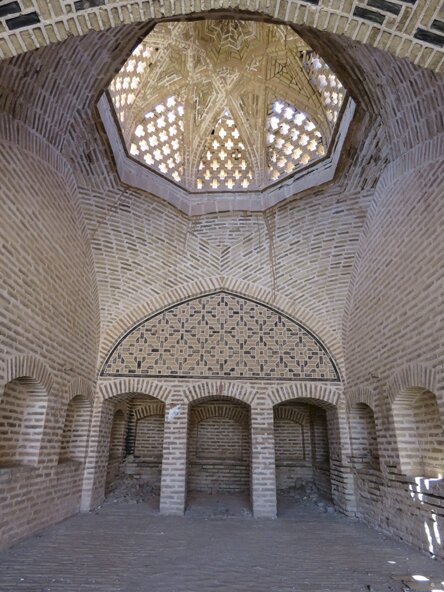New round of restoration begins on Qajar-era caravanserai in Tabas

TEHRAN-The second round of restoration work has been commenced on the Qajar-era (1789-1925) Khan Caravanserai in Tabas, South Khorasan province, the deputy provincial tourism chief has said.
The project involves landscaping, repairing the yard’s walls and stables, and eliminating the extensions, Ali Shariatimanesh announced on Saturday.
The historical inn, which is located on Tabas-Yazd old road, has several rooms, a courtyard, a stable, and windcatchers (badgirs), the official added.
The structure, which is one of the candidates for a collective UNESCO tag, is surrounded by a cistern and a castle dating back to the Safavid era (1501-1736), he noted.
Caravansary (also Caravanserai or Caravansaray) is a building that served as the inn of the Orient, providing accommodation for commercial, pilgrim, postal, and especially official travelers.
According to Encyclopedia Iranica, from the number of surviving caravansaries and their sizes, it is clear that in Safavid and Qajar times there was a state architectural department that was specifically concerned with the construction of caravansaries and stations on the overland routes. Furthermore, in the cities, several caravansaries were erected as lodging houses, depots, and commercial offices in the vicinity of the bazaars.
A typical caravansary consists of a square or rectangular plan centered around a courtyard with only one entrance and arrangements for defense if necessary. Whether fortified or not, it at least provided security against beasts of prey and attacks by brigands.
ABU/AFM

Leave a Comment